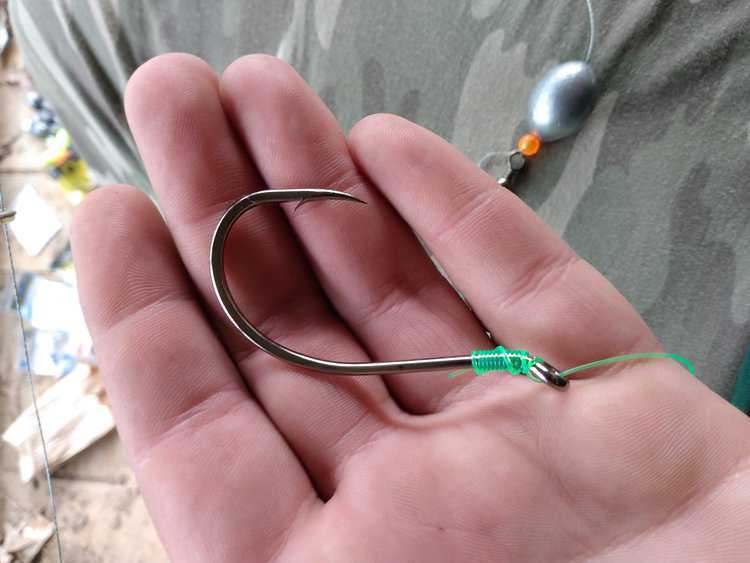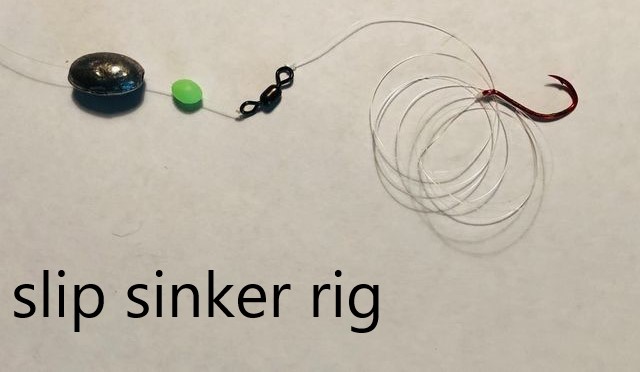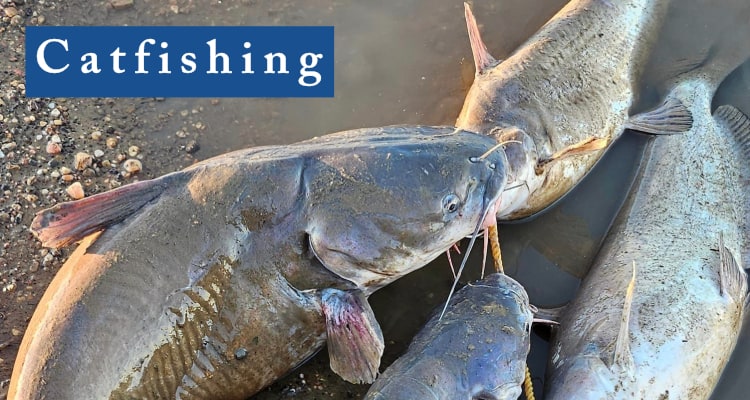Catfish, a diverse group of ray-finned fish, are known for their prominent barbels, which resemble a cat’s whiskers. These fish inhabit a wide range of freshwater environments, though some species live in coastal regions. Catfish vary significantly in size and behavior, with species like the diminutive candiru and the massive Mekong giant catfish.
Catfish are popular among anglers due to their strong fight and good taste. They are relatively easy to catch but require specific techniques and equipment for a successful fishing experience. This guide will help you learn the fishing setup, best bait, effective techniques, optimal fishing times, ideal locations, beginner tips, and the necessary gear and tools for catfishing.
Catfish Fishing Setup
The most common tackle to catch catfish includes a combination of a medium to medium-heavy rod, a durable spinning or baitcasting reel, and strong fishing line. The rod should typically be between 6 to 8 feet in length, offering a good balance between sensitivity and strength. This length allows for better casting distance and control, especially useful when targeting larger catfish.
For the reel, a sturdy spinning or baitcasting reel that can handle heavy line is ideal. The reel should have a smooth drag system to manage the fight with a large catfish. As for the line, heavy-duty fishing line is essential, with many anglers preferring a line strength of 20 to 30 pounds. This strength provides sufficient force to pull in large catfish while also withstanding abrasion from rocks and debris.
The best setup for catfish also includes the right choice of hooks and weights. Circle hooks, in sizes ranging from 4/0 to 8/0, are highly effective for catfish because they are designed to hook the fish in the corner of the mouth, facilitating easier catch and release. The size of the hook should be chosen based on the size of the bait and the catfish being targeted. For weights, sliding sinkers are commonly used, with the weight depending on the current and depth of the water. A range of 1 to 3 ounces is typically sufficient for most conditions.

The best rig for catfish is often the slip sinker rig. This rig consists of a sliding sinker threaded onto the line, followed by a bead and then a swivel. The swivel stops the sinker from sliding down to the hook and also prevents line twists. A leader of about 1 to 3 feet, depending on water clarity and cover, is then tied to the other side of the swivel, with the hook attached to the end of the leader. This setup is effective as it allows the catfish to pick up the bait without feeling the weight of the sinker, thereby increasing the chances of a successful hookset.

Best Bait For Catfish
Catfish are opportunistic feeders, known for their omnivorous diet. They primarily feed on a variety of items including small fish, insects, aquatic worms, crustaceans, and plant material. This varied diet influences the types of bait that are effective for catching them.
The best live bait for catfish includes nightcrawlers, minnows, and shad. Nightcrawlers are particularly versatile and can attract catfish in a wide range of water conditions. They are easy to use; simply thread one or two worms onto the hook, ensuring that the hook is well-covered. Minnows and shad are excellent for larger catfish like flatheads, which prefer live prey. Hook the minnow through the back or lips and fish near the bottom or in structures where catfish hide.
When it comes to lures, catfish are less likely to be caught with traditional spinning lures. However, jigs and artificial lures that mimic the smell and movement of their natural food can be effective. The best Catfish lures often incorporate scent attractants. Use these lures in a slow, steady retrieval to mimic the movement of live bait, focusing on areas near the bottom or around structures where catfish are likely to be found.
In summary, the best baits for catfish include live baits like nightcrawlers, minnows, and shad, as well as scented lures designed for catfish.
Catfish Fishing Techniques
Still Fishing
Still fishing is one of the most common and effective techniques for catching catfish. This method involves casting your line and letting the bait sit in the water, usually at or near the bottom. The setup for still fishing typically includes a slip sinker rig, which allows the bait to move naturally with the current while the sinker holds the line in place. Circle hooks are often used to ensure a good hookset. Still fishing is most effective in areas where catfish are known to feed or rest, such as deep holes, near submerged logs, or river bends. It’s particularly useful in calmer waters or when fishing from a stationary position like a dock or riverbank.
Drift Fishing
Drift fishing is a dynamic technique that covers more water and targets active catfish. In this method, the boat is allowed to drift with the current, dragging the bait along. The setup involves a basic catfish rig with a float to keep the bait off the bottom. This technique is ideal when catfish are spread out over large areas, such as in larger lakes or rivers. It allows you to explore different depths and locations, increasing your chances of finding where the catfish are feeding. Drift fishing is most effective in moderate currents and open water where you can cover ground without snagging.
Jugging
Jugging for catfish is a unique and fun technique. It involves using a float, like a jug, which has lines and hooks attached to it. The jug floats on the surface while the lines dangle baited hooks below. This method is great for targeting flathead and blue catfish. The setup can vary, but it typically involves multiple hooks rigged at varying depths. Jugging is most effective in areas with slow-moving or still waters, such as lakes or slow rivers. It allows you to cover a broad area and is especially productive when catfish are actively feeding.
Trotlining
Trotlining is a traditional technique that involves setting a long line, with baited hooks attached at intervals, between two points in the water. The line is typically set so the hooks are just off the bottom. This method can cover a wide area and is excellent for catching several catfish at once. Common baits for trotlines include live bait like minnows or cut bait. Trotlining is most effective in channels, river bends, or across flats where catfish frequent. It’s particularly useful for overnight fishing or when you want to cover a large area without actively managing the line.
Noodling
Noodling, a hands-on technique, is adventurous and involves catching catfish with bare hands. This method is primarily used for flathead catfish. The noodler feels around in catfish holes, usually in shallow water, and when they locate a catfish, they induce it to bite their hand and then pull it out of the water. Noodling is most effective in shallow, murky waters like riverbanks, near submerged logs, or in rock crevices. It’s a challenging and physically demanding technique but offers a thrilling and unique catfish-catching experience.
Best Time To Catch Catfish
Understanding the best times to catch catfish can significantly enhance your fishing success.
- When do Catfish spawn? Catfish typically spawn in late spring to early summer when water temperatures reach about 70°F (21°C).
- Best time of day to catch Catfish? Early morning and late evening are the best times. Catfish are more active during these times, especially in shallow waters as they feed.
- Best time of year to catch Catfish? Late spring to early fall is ideal. Water temperatures are conducive to catfish feeding habits, and they are more active during these warmer months.
Spring
In spring, as the water warms, catfish move into shallower areas to feed and prepare for spawning. The best time to catch catfish in spring is during the early morning and late afternoon hours. During this season, still fishing with baits like worms, minnows, or cut bait can be very effective. Target areas where the water is warming up the fastest, such as shallow bays or areas with dark bottom that absorb heat.
Summer
Summer is peak season for catfish fishing. Catfish are active throughout the day, but early morning and late evening remain the best times for fishing. Night fishing can also be extremely productive. Drift fishing is a great technique in summer, as it allows covering different depths and areas where catfish may be actively feeding. Additionally, jugging and trotlining can yield good results, especially in larger bodies of water.
Fall
During fall, catfish start moving to deeper waters as temperatures drop. However, they are still actively feeding to prepare for winter. The best time to catch catfish in fall is during the warmer parts of the day, usually from late morning to mid-afternoon. Still fishing and drift fishing are effective techniques in fall. Focus on areas where catfish may be congregating, like deep holes or along river bends.
Winter
Winter can be challenging for catfishing, as they become less active in cold water. However, fishing during the warmest part of the day can still be productive. The key is to fish slowly and patiently, focusing on deep holes where catfish tend to hold in colder temperatures. Using scented baits can help attract less active catfish.
Night
Catfish are naturally nocturnal, making night an excellent time to target them. They are more active and feed aggressively after dark. Night fishing requires specific techniques like using glow-in-the-dark floats, bells, or lights on your rod tip for bite detection. Bait like stink bait, chicken liver, or live bait can be very effective. Focus on areas with minimal current where catfish hunt for food.
Where To Find Catfish
The best water bodies for catfish include rivers, lakes, ponds, and coastal regions. Catfish inhabit various depths, but they are often found in deeper waters during the day and shallower waters at night. The depth at which to fish for catfish varies depending on the time of day and the specific water body.
Fish finders are incredibly helpful in locating catfish, especially in larger and deeper bodies of water, as they can identify underwater structures, depth changes, and even show the presence of fish.
Rivers
Rivers are prime locations for catfish. These fish are often found in deep holes, around submerged structures like logs, and in river bends where the water is deeper and slower. The most effective setup for river fishing is a slip sinker rig combined with a strong-smelling bait like cut bait or stink bait. Drift fishing works well in rivers, as it covers more area and targets catfish in different locations and depths.
Lakes
Lakes offer diverse habitats for catfish, ranging from shallow flats to deep water near the dam. In lakes, catfish are often located near structures such as submerged trees, rock piles, or weed beds. A versatile approach is still fishing with a slip sinker rig, using live bait like nightcrawlers or minnows. For deeper areas, a fish finder can be invaluable in locating catfish, particularly in larger lakes where catfish might be more scattered.
Ponds
Ponds, especially larger ones, can be excellent for catfishing. Catfish in ponds tend to stick close to features like drop-offs, inlets, or areas with vegetation. The best technique in ponds is still fishing, using a simple setup with a bobber and a good-quality hook baited with live bait or dough bait. Since ponds are usually smaller and shallower, finding catfish can be easier, and the use of a fish finder might not be necessary.
Shore
Catfish are often found close to the shore during the early morning and late evening. The key is to cast near structures like logs, boulders, or areas where the bottom changes. Still fishing with a bottom rig is effective, using bait such as cut fish, chicken liver, or specially formulated catfish bait. For shore fishing, long casting rods can help in reaching deeper waters from the bank.
Tips To Catch Catfish For Beginners
- For beginners, a medium-heavy rod about 6-7 feet in length paired with a spinning or baitcasting reel is ideal. This setup provides a good balance of sensitivity and strength.
- Use a monofilament or braided line with a test strength of 15-20 pounds. This strength is versatile enough for most catfish sizes.
- Use a slip sinker rig, one of the simplest and most effective for catfish. Thread a sliding sinker onto your line, followed by a bead, and then tie on a barrel swivel. Attach a 1-2 foot leader line to the other side of the swivel and then your hook.
- A size 4/0 to 6/0 circle hook works well for beginners. Circle hooks are great for catfish and reduce the chances of gut hooking the fish.
- Nightcrawlers, chicken liver, and stink baits are great for starting out. They’re easy to find, handle, and catfish love them.
- For nightcrawlers, thread the worm onto the hook leaving a portion dangling to attract catfish. For chicken liver or stink baits, ensure the bait is securely attached to the hook so it doesn’t come off during casting.
- Look for areas where catfish are known to feed or rest, such as deep holes, near logs, river bends, or areas with muddy or sandy bottoms.
- Cast your line and let the bait settle at the bottom. Catfish feed primarily near the bottom, so that’s where your bait should be.
- Keep a close eye on the line and rod tip for any movement. Catfish bites can range from subtle taps to aggressive pulls.
- With circle hooks, a gentle tug is often enough to set the hook. The fish usually hooks itself as it swims away with the bait.
- Catfish can take some time to bite. Be patient and give them time to find your bait.
- Use a pair of gloves when handling catfish. Be cautious of their sharp barbels and dorsal and pectoral fins.
- If you’re not planning to keep the catfish, handle it with care and release it back into the water as quickly as possible to ensure its survival.
Best Catfish Fishing Gear And Tools
Fishing Rod
The ideal fishing rod for catfish should be a medium to medium-heavy action rod, ranging from 6 to 8 feet in length. This provides the necessary strength to handle large catfish while maintaining enough sensitivity to detect bites. The length of the rod also aids in casting distance and accuracy, especially when fishing from the shore. A rod with a good backbone (the rod’s strength) is essential for setting the hook firmly and battling strong catfish.
Fishing Line
Braided or monofilament lines with a test strength of 20 to 30 pounds are best fishing lines for catfish. Braided line is preferred for its strength and lack of stretch, offering better hook-setting capabilities and sensitivity to detect bites. However, in clear water, a monofilament line may be advantageous due to its lower visibility. For targeting particularly large species, such as blue or flathead catfish, some anglers might opt for line strengths up to 50 pounds.
Fishing Reel
A durable and reliable catfish reel is the spinning or baitcasting reel. The reel should have a smooth drag system capable of handling the strong runs of a catfish. For spinning reels, a size 4000 to 5000 works well, balancing the need for a strong reel with ease of use. Baitcasting reels should have a robust build and a good line capacity to accommodate the heavier lines used for catfish. The reel must also be able to withstand the corrosive effects of freshwater and, in some cases, saltwater environments.
Fish Finder
A quality fish finder is a valuable tool for locating catfish, especially in larger and deeper water bodies. The ideal fish finder should have a good depth range and the ability to provide clear images of the bottom structure. Features like GPS mapping, side imaging, and down imaging enhance an angler’s ability to pinpoint catfish habitats like underwater holes, submerged logs, or other structures. A portable or boat fish finder with a user-friendly interface is advisable, allowing for easy navigation and use during fishing trips.

